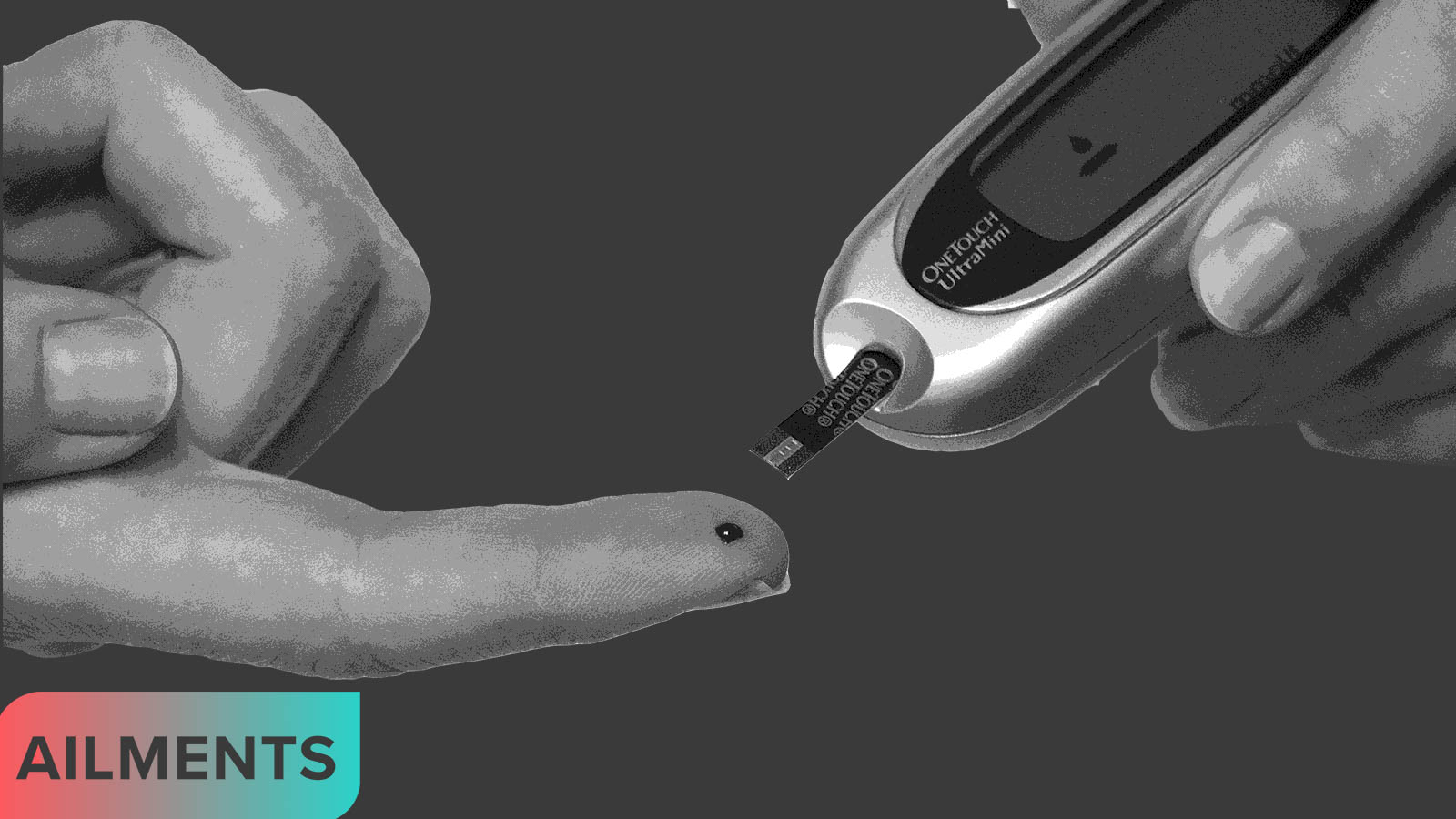
Diabetes is an expensive disease, collectively costing more than $245 billion in the United States, according to data from the Centers for Disease Control and Prevention (CDC). But the human cost is far greater. Severe cases of diabetes can lead to blindness, kidney failure, heart attacks, strokes, and limb amputations. Unfortunately, as a disease of civilization often linked to high sugar intake and sedentary lifestyles, diabetes is becoming more prevalent as 1.4 million new cases are diagnosed each year.
With nausea, slow to heal wounds, excessive thirst, and blurred vision among the myriad symptoms of diabetes, there is a need to prevent the disease from ever taking hold. Could cannabis be a tool in the fight to prevent and treat diabetes?
Research Overview
Recent studies have explored the possibility that cannabis could serve not only as a treatment for diabetes, but also as a preventative measure.
The Studies
In addressing the neuropathic pain in the legs and feet that many diabetics suffer, cannabis could play a beneficial role. A 2015 study published in the European Journal of Pain found that a spray containing THC and cannabidiol (CBD) was able to ease neuropathic pain in some diabetics.
Debates are ongoing about if cannabis has the power to either increase or decrease the risk of getting type 2 diabetes. A 2016 study of 18,000 Swedish men and women published in the Journal of Diabetes Research did not uncover any correlation between cannabis and type 2 diabetes.
However, a 2018 study revealed a positive relationship between cannabis use and decreased likelihood of type 2 diabetes. Published in the journal Drug and Alcohol Review, the study found that cannabis users were less likely than non-cannabis users to have type 2 diabetes. These results are an invitation to additional research, as the authors of the study wrote: “Before the protective effects of cannabis use for diabetes can be suggested, further epidemiological studies are needed that incorporate prospective designs, as well as feature innovative exposure measurements and statistical analyses.”
A prior meta-analysis, published in 2015 in the journal Epidemiology, concluded that there is an inverse relationship between cannabis smoking and diabetes. In other words, cannabis smokers were found to be less likely to have diabetes than those who do not smoke cannabis. Reasons for this finding could be that lower BMI and fasting insulin rates have been associated with cannabis use in addition to suppressed appetite, which makes medical marijuana a potential treatment for obesity as well. Since obesity is a major risk factor for type 2 diabetes, one could infer that smoking cannabis indirectly reduces the likelihood of becoming diabetic.
Patient Perspectives
The diabetes epidemic doesn’t just have a stronghold in the United States; it’s a disease of global proportions, affecting nations as distant as the Republic of Vanuatu in the South Pacific. In Vanuatu, 13 percent of the population is diabetic, compared with about 8.5 percent of the population worldwide. In response to the diabetes crisis, the government of Vanuatu is in the process of making a cannabis-based pharmaceutical drug widely available to the island’s population. The first 1,000 patients in Vanuatu are scheduled to begin a clinical trial and results could shed light on how cannabis can be leveraged to treat diabetes.
The company charged with creating this experimental cannabis-based drug is Phoenix Life Sciences International. The CEO and founder of the company, Martin Tindall, shared with Forbes contributor Andre Bourque in 2018 how cannabis medicine may not merely be a solution for this one small island nation. Tindall said, “If you can save the insurer money, it works everywhere else.”
With the average annual cost of treating diabetes now topping US$16,000 per person, the insured need the cost savings even more than the insurers.
What the Experts Say
Beyond the challenging financial aspect of treating diabetes is the life-altering pain that patients experience on a daily basis. Lead author of the 2015 study on neuropathic pain, Dr. Mark Steven Wallace, chair of the division of pain management at the University of California, San Diego, views cannabis as a viable option for treating diabetes symptoms. Wallace told Endocrine Web: “Medicinal marijuana has been legal in California since 1996, and we have learned a lot during this time. I frequently recommend medicinal marijuana to treat a variety of painful conditions.”
By Gina Coleman
In terms of specific treatment of neuropathic pain, Wallace explained, “Diabetic peripheral neuropathy is one of the most common neuropathic pain syndromes in our society. There are very few treatment options and most of the medications available have dose-limiting side effects.”
Accurately pinpointing dosage guidelines is essential in medicine, but even more so when a physician is treating a patient using other medications concurrently. For example, cannabis may decrease the effectiveness of metformin, a medication commonly prescribed to diabetics to manage blood sugar levels.
With regard to dosage, Wallace also noted, “There is a lot of evidence on the positive effects of cannabis on the treatment of neuropathic pain. However, there are few placebo-controlled studies and very few studies that have looked at different doses.”
The Bottom Line
Under a physician’s supervision, cannabis is being used for many patients with diabetes. It is recommended that diabetics who are interested in adding cannabis to their medication regimens consult with a physician to avoid any possible drug interactions and to get the best information for their particular situation.











